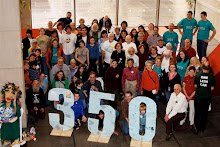Featured Sustainable Buisness
Keystone Associates
The sustainability movement is one that would mean very little without companies that actively support rethinking modern business paradigms. Keystone Associates is one such business that shows the initiative and ingenuity to improve both their company and their local community. Keystone Associates is an architecture company based out of Binghamton, New York that has taken great strides toward sustainable development. As students of the New Visions Sustainable Community Academy we were able to experience firsthand some of the conscientious thinking that Keystone Associates has put into their recent building designs. An energy-efficient/sustainable building that Keystone designed was the Boys and Girls Club in Binghamton, New York. This building was designed by LEED certified architect Kenneth Gay and uses insulated concrete forms or ICFs. Insulated concrete forms are giant foam blocks which once filled with concrete, take on a very high insulation value saving money/energy on heating and cooling. Keystone Associates won an award for its design through the Insulated Concrete Form Magazine. Keystone was recognized with honors at the World of Concrete expo in Las Vegas.
Below is a picture of the Boys and Girls Club .
The newest building being designed by Keystone Associates is MaineSource in Ithaca, New York. The building was designed following guidelines set by The Leadership in Energy and Environmental Design and is hoping to receive accreditation once
 completed. The guidelines set by LEED take into consideration 8 areas of quality several of which are location and planning, water efficiency, and materials and resources. Keystone designed MaineSource keeping all these prerequisites in mind. Once finished the building will be another innovative design by Keystone and a beautiful addition to Ithaca’s community.
completed. The guidelines set by LEED take into consideration 8 areas of quality several of which are location and planning, water efficiency, and materials and resources. Keystone designed MaineSource keeping all these prerequisites in mind. Once finished the building will be another innovative design by Keystone and a beautiful addition to Ithaca’s community.
Special thanks to Keystone Associates for letting the New Visions Sustainable Community Academy experience the many facets that go into planning and designing a building and congratulations to Keystone for being the first featured sustainable business.









